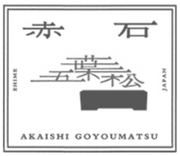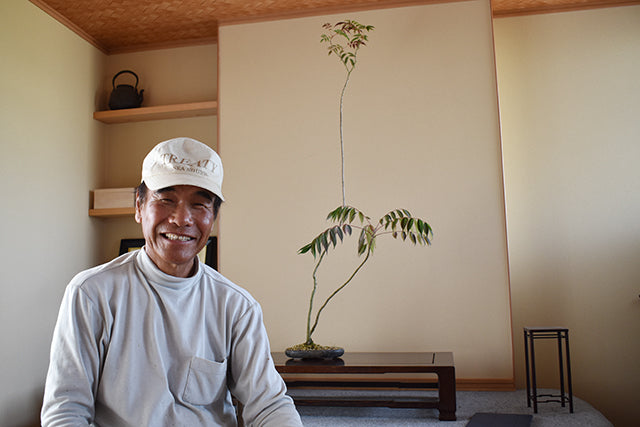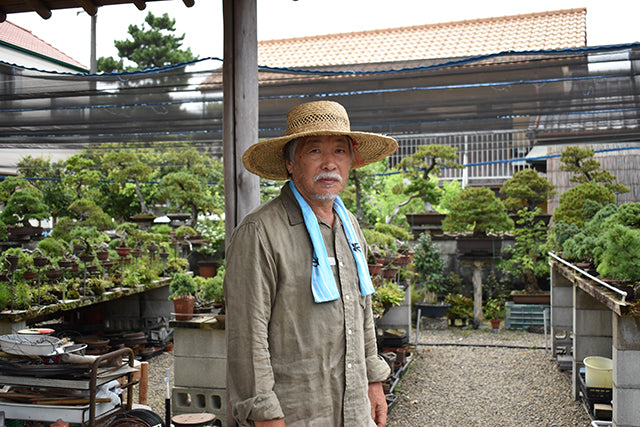1,000 bonsai growing in the great outdoors
The first thing that jumps out at you is the large bonsai trees lined up in the garden. Mr. Moritaka alone manages nearly 1,000 bonsai that stand majestically in the midst of nature. Every year, he digs up the number of bonsai to be shipped and replants them in pots.
This process, called "potting up," is very labor intensive as the bonsai get larger. However, Mr. Moritaka continues to do this work even though he is almost 70 years old.
He digs up bonsai that have been rooted in the ground for decades. You can easily imagine that it is not an easy task.
"When I am asked to do something, I want to do it. I am happy when people are happy. That's why I want to continue working for the rest of my life."
Mr. Moritaka's face was softer and gentler than when he was working.

Bonsai craftsman who is strict with himself and kind to others
Of course, his main job is to prepare bonsai without fail, and his high level of skill is highly regarded by his fellow craftsmen. Mr. Moritaka is strict with himself and kind to others, and this is reflected in the bonsai he prepares.
Goyomatsu grows slower than other pine trees. Among the many species of bonsai, it stands out for its slow growth. Therefore, a bonsai of a stately Goyomatsu must be quite old. In general, bonsai growers do not like to ship trees that are too long because of the risk of dying and the time and effort required to maintain them. Such a tendency has led to the development of grafting techniques for Black Pines that can shortcut the growth of Goyomatsu. Takamatsu, a bonsai production area, is one such example. In the midst of this trend, I can't help but feel a sense of awe for Mr. Moritaka, who has spent many years growing the slow-growing Goyomatsu from young trees.


Selling killifish for Japanese fans
In addition to bonsai, he also keeps and sells thousands of killifish. As they are Japanese, many people like to grow them together with bonsai. It all started when he was asked to do so. He now grows many varieties, with the most popular being Yang Kwei and Miyuki.
I want to respond to requests. Mr. Moritaka's life as a craftsman can be seen in his work at Kokeko Garden.


Bonsai craftsmen with a gentle smile
I never thought that I would be reminded of the fact that "continuity is power" while covering bonsai. I thought so when I saw the vast bonsai fields.
Bonsai takes many years and many people's hands. It is not something that you can see results immediately. Mr. Moritaka has nurtured his bonsai to such an extent that it grows with each season as time passes slowly. What he has continued to do because it makes people happy has led to his own skills, and his bonsai are in demand by people.
By continuing to talk with bonsai and repeating the trial and error process, Mr. Moritaka's bonsai will continue to be in demand by people.

Kokeko Garden

- Address
- 2198 Ueno Kou, Doi-cho, Shikokuchuo City, Ehime Prefecture



